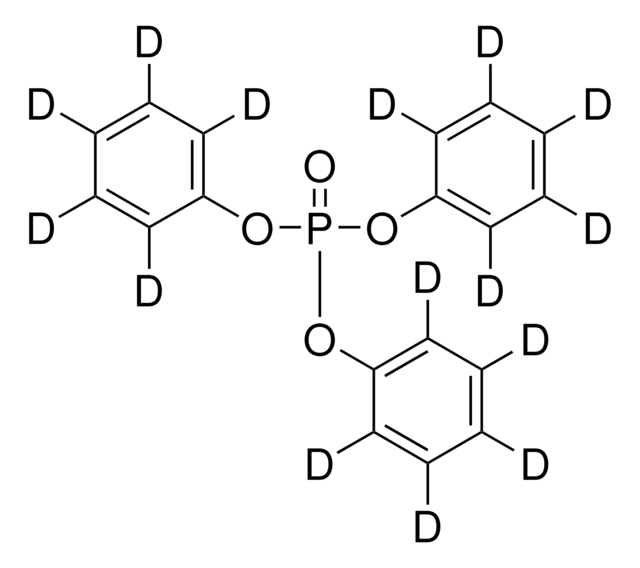492175
Diazinon-(diethyl-d10)
≥99 atom % D, ≥98% (CP)
About This Item
Productos recomendados
isotopic purity
≥99 atom % D
assay
≥98% (CP)
refractive index
n20/D 1.4978 (lit.)
bp
83-84 °C/0.002 mmHg (lit.)
density
1.152 g/mL at 25 °C
application(s)
agriculture
environmental
mass shift
M+10
storage temp.
2-8°C
SMILES string
[2H]C([2H])([2H])C([2H])([2H])OP(=S)(Oc1cc(C)nc(n1)C(C)C)OC([2H])([2H])C([2H])([2H])[2H]
InChI
1S/C12H21N2O3PS/c1-6-15-18(19,16-7-2)17-11-8-10(5)13-12(14-11)9(3)4/h8-9H,6-7H2,1-5H3/i1D3,2D3,6D2,7D2
InChI key
FHIVAFMUCKRCQO-HXOHQZFQSA-N
¿Está buscando productos similares? Visita Guía de comparación de productos
Categorías relacionadas
Application
- In analytical methods for routine monitoring of residual pesticide.
- As an internal standard in GC–MS quantification of pesticides in food.
Packaging
signalword
Danger
hcodes
Hazard Classifications
Acute Tox. 3 Oral - Aquatic Acute 1 - Aquatic Chronic 1
Storage Class
6.1C - Combustible acute toxic Cat.3 / toxic compounds or compounds which causing chronic effects
wgk_germany
WGK 3
flash_point_f
235.0 °F - closed cup
flash_point_c
112.8 °C - closed cup
Certificados de análisis (COA)
Busque Certificados de análisis (COA) introduciendo el número de lote del producto. Los números de lote se encuentran en la etiqueta del producto después de las palabras «Lot» o «Batch»
¿Ya tiene este producto?
Encuentre la documentación para los productos que ha comprado recientemente en la Biblioteca de documentos.
Los clientes también vieron
Nuestro equipo de científicos tiene experiencia en todas las áreas de investigación: Ciencias de la vida, Ciencia de los materiales, Síntesis química, Cromatografía, Analítica y muchas otras.
Póngase en contacto con el Servicio técnico















